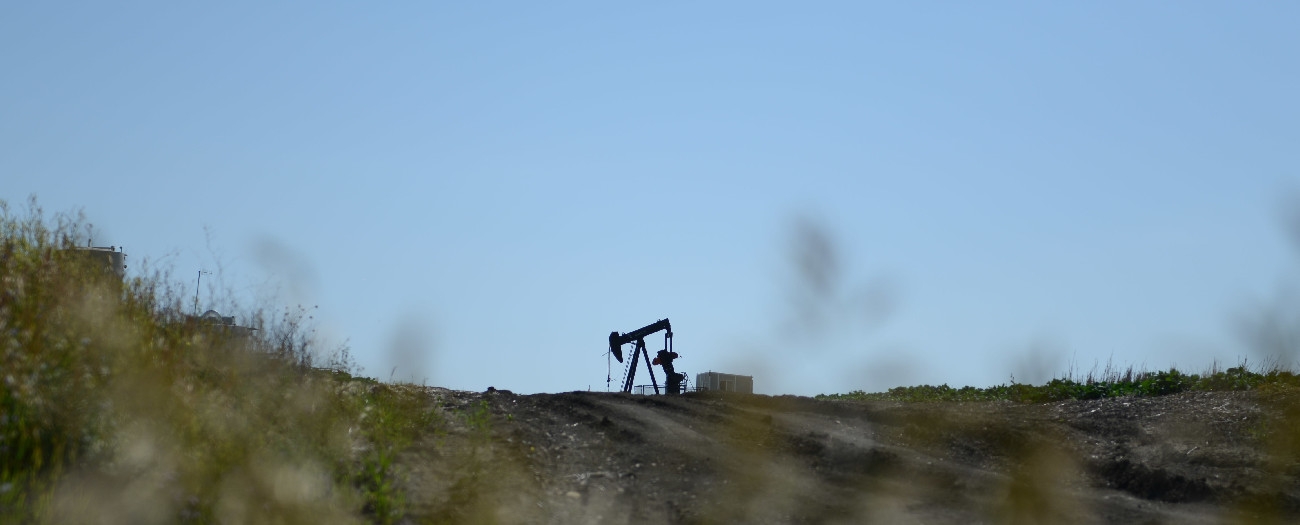Like a detective, Jodie Fedorak pieces together clues at energy sites to see if companies follow the rules.
Alberta - September 05, 2017Jodie Fedorak has lost track of the number of oil and gas sites she’s visited in her five years as a field inspector with the Alberta Energy Regulator (AER). From one corner of the province to another, she’s travelled for countless hours on Alberta roads. Most days her only companion is her GPS system—or as she lovingly refers to it (in good times and bad), “James.”
But when Fedorak reaches her destination, dotted by pump jacks among golden farm fields, it’s go time.
“I have an inquisitive mind, and when I’m on a site, I feel like a detective,” she says. “Every site is like a puzzle that I try to piece together.”
Determining which site to inspect next is easy—AER technical specialists send AER field centres a “to-check” list on a regular basis. To build the lists, a number of factors are weighed, including the last inspection date, whether rules have been broken in the past, company history and performance, what’s being produced, and site size and location.
Today, Fedorak will inspect a relatively “young” crude oil single battery located south of Drumheller. According to AER records, this small site has never been inspected. It’s due for a checkup.
To get there, Fedorak sets out on a 1.5-hour journey from the AER’s Midnapore Field Centre.
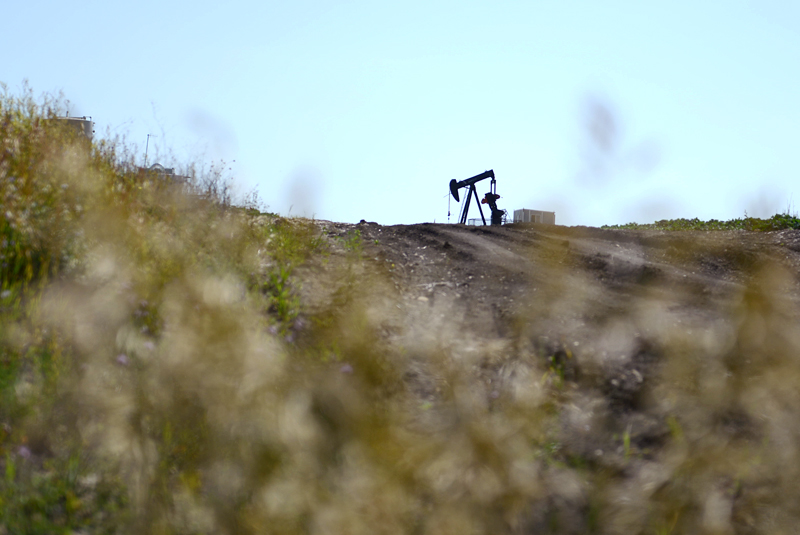
Fedorak drives up to the site entrance. She looks for a sign that identifies the company and confirms its location. Among other things, she’s also scanning the area for potential hazards and a 24-hour emergency phone number. Fedorak parks her truck; it’s time to suit up in fire-resistant coveralls and steel-toe boots and test her yellow hazardous-gas monitor.
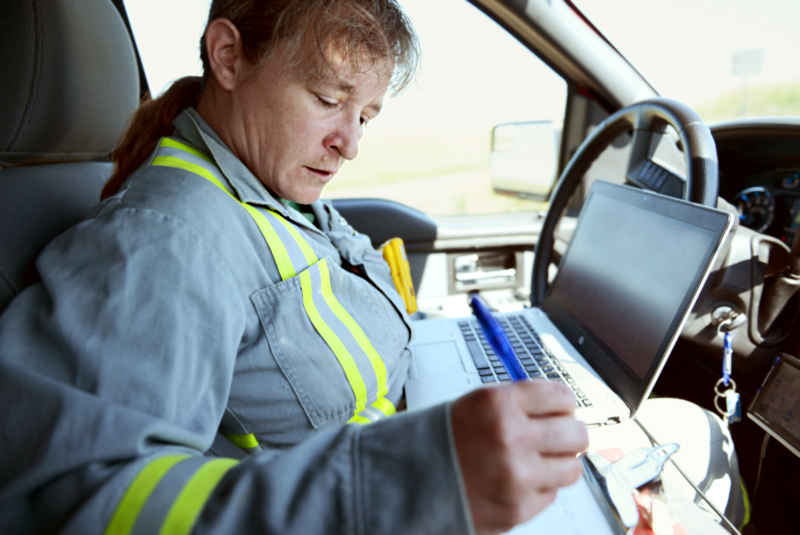
Fedorak pulls up a laptop from the backseat and loads the AER’s field inspection system (FIS) for an overview of the well site. “This truck is my office on wheels,” Fedorak explains as she takes notes on the site’s inspection and production history, licence numbers, and well data. The FIS is used by AER field staff to keep track of inspections across the province.
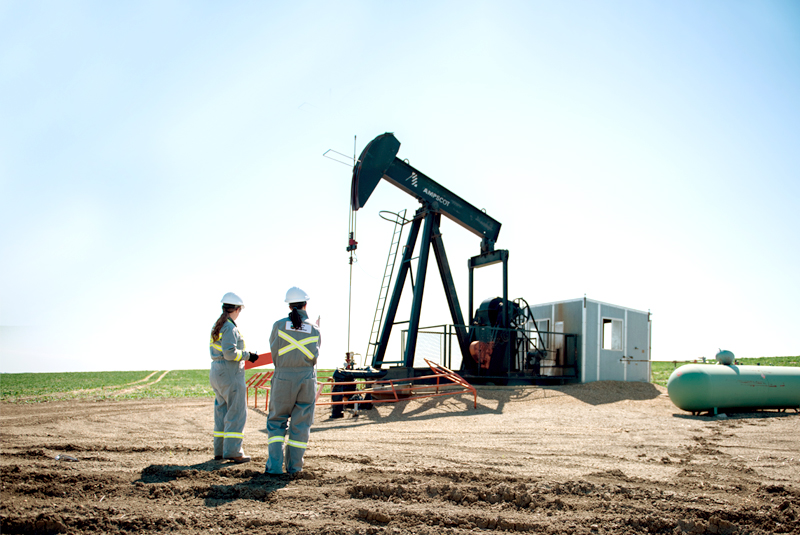
Fedorak dons her hard hat, safety glasses, and gloves before stepping out of her truck and into the scorching summer heat. “I like to start where the production starts—at the well,” nods Fedorak as she steps across the site, toward the pump jack.
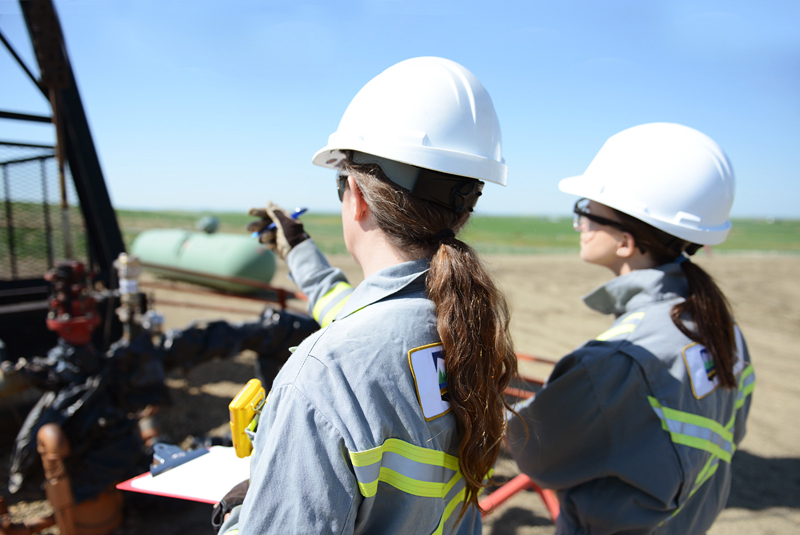
Fedorak points to orange, metal fencing wrapped around the wellhead. She explains that it’s there to prevent any accidental run-ins with vehicles or farming equipment. Fedorak then turns to the wellhead itself. She checks for leaks, makes sure the area is clean, measures the exhaust pipe’s distance from the wellhead, and ensures everything is in the right position. There’s a lot to take in here.
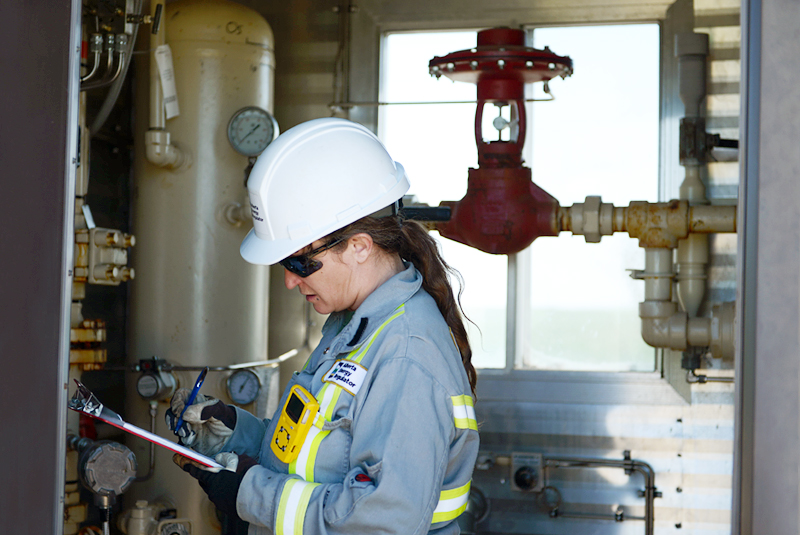
Now it’s time to inspect the well battery, where much of the site’s activity is documented. Fedorak opens a shed-like structure hiding behind the wellhead, known as the separator measurement building. Is the company measuring and reporting how much gas is produced at this site? Fedorak scribbles notes on her clipboard as she moves along.
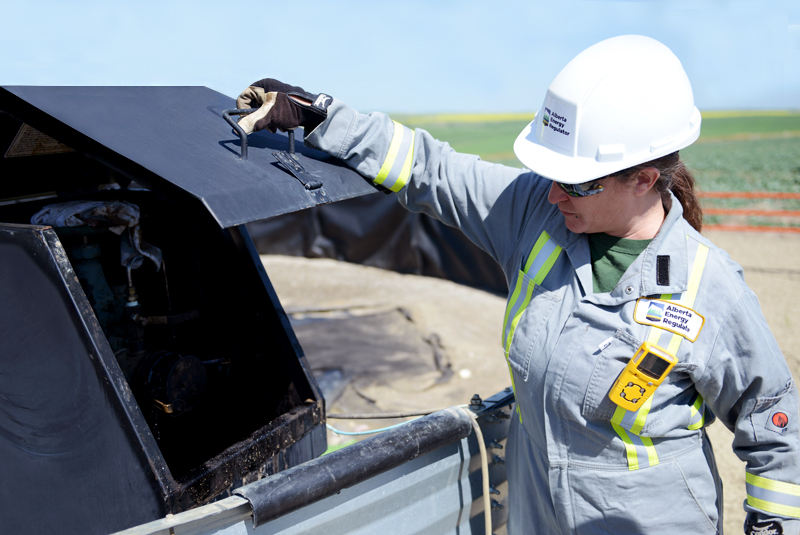
Fedorak’s last task is to inspect the storage tanks, which hold oil and produced water. A part of this inspection includes lifting the latch on a black box, called a spill control device. If the box is overflowing onto the ground, Fedorak can write-up the company for poor housekeeping. “But that rarely happens,” she adds.
Last Steps
After spending just under an hour on site, Fedorak hops into her truck and inputs her findings into FIS before returning to the field centre with James as her co-pilot. In less than 24 hours the company will know if they’ve passed the inspection.
It’s been another long, hot day on Alberta’s highways, but Fedorak says she wouldn’t trade her job for the world.
“One of the highlights of what I do is the ability to travel and explore the province,” Fedorak says. “I never know what I’ll find—no two sites or days are the same.”
Kara MacInnes, Writer
Luke Spencer, Digital Media


